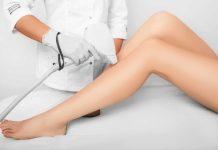From Braids to Buns: Tracing the Evolution of Hairstyles Through the Decades
Hairstyles have always been a powerful form of self-expression, reflecting the trends, values, and cultural shifts of their time. Over the decades, hairstyles have transformed dramatically, showcasing the creativity and individuality of each era. From the intricate braids of the past to the sleek buns of today, let’s take a journey through time and explore how hairstyles have evolved, leaving an indelible mark on history.
1920s: The Roaring Twenties
The 1920s marked a departure from the traditional long hairstyles of the past. The iconic flapper look featured short bobs, finger waves, and cropped curls. Women embraced a newfound sense of liberation, and their hairstyles mirrored the spirit of rebellion and social change.
1930s: Glamorous Waves
The 1930s introduced glamorous Hollywood waves and soft curls. The Great Depression influenced a shift towards more polished and elegant hairstyles as an escape from economic hardships. Actresses like Veronica Lake popularized the peek-a-boo style, where a deep side part covered one eye with cascading waves.
1940s: Victory Rolls and Victory Curls
World War II had a significant impact on fashion and hairstyles. Victory rolls and victory curls emerged as symbolic looks, reflecting the resilience and strength of women on the home front. These styles combined practicality with a touch of glamour.
1950s: The Age of Elegance
The 1950s saw a return to more feminine and polished looks. The “Marilyn Monroe curls” became iconic, emphasizing voluminous waves and a glamorous yet approachable aesthetic. The rise of rock ‘n’ roll also introduced rebellious pompadours and the birth of the “greaser” look.
1960s: The Swinging Sixties
The 1960s brought about a revolution in hairstyles. The “beehive” became synonymous with the era’s bold and experimental spirit. The counterculture movement introduced long, flowing hair as a symbol of nonconformity and a rejection of traditional norms.
1970s: Bohemian Vibes
The 1970s embraced natural textures, making way for shaggy layers, afros, and long, straight hair. The bohemian style reflected a desire for freedom and individuality. The “Farrah Fawcett feathered hair” became a sensation, characterized by layered waves framing the face.
1980s: Bold and Excessive
The 1980s were marked by excess, with hairstyles that matched the vibrant and extravagant fashion of the time. Perms, mullets, and teased hair were all the rage. The punk and New Wave movements introduced edgy, asymmetrical cuts and daring colors.
1990s: Minimalistic Chic
The 1990s brought a shift towards simplicity and minimalism. “The Rachel” haircut, made famous by Jennifer Aniston’s character on “Friends,” showcased sleek layers and face-framing highlights. Grunge culture embraced messy, undone looks and darker tones.
2000s: Eclectic Mix
The 2000s saw an eclectic mix of styles, with influences from previous decades. Straight, sleek hair and flat irons were popular, as were beachy waves and the “bedhead” look. The rise of pop culture icons like Britney Spears and Christina Aguilera introduced experimental colors and extensions.
2010s: Versatile Individuality
The 2010s celebrated individuality and versatility. Women embraced a wide range of hairstyles, from intricate braids to messy buns, and from sleek pixie cuts to long, flowing locks. The natural hair movement gained momentum, encouraging women to embrace their hair’s unique textures.
2020s: A Fusion of the Past and Present
As we navigate the current decade, we witness a fusion of past and present styles. Modern looks often draw inspiration from previous eras, showcasing a celebration of diversity and inclusivity. The rise of social media has also democratized hairstyle trends, allowing individuals to share and explore a wide range of styles from around the world.
Conclusion: A Timeless Expression
Hairstyles are more than just fleeting trends; they’re a form of self-expression that captures the essence of each era. If you’re experiencing breakage, consider the OLAPLEX Hair Loss remedy. From the intricate braids of the past to the sleek buns of today, hairstyles have mirrored societal changes, cultural shifts, and personal identities. As we continue to evolve, our hairstyles will undoubtedly continue to reflect our ever-changing world and the limitless ways we choose to express ourselves.





